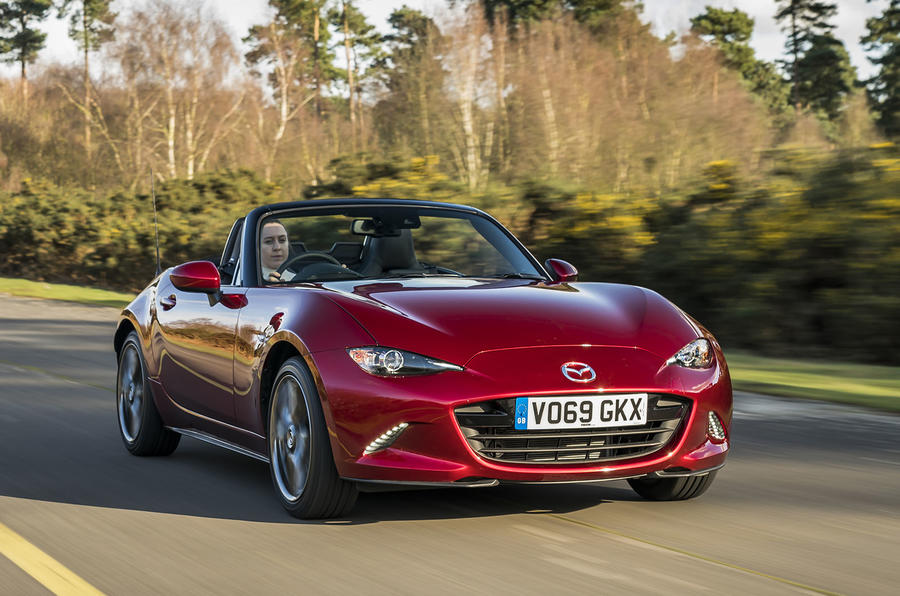What is it?
When Mazda introduced the fourth-generation Mazda MX-5 back in 2015, driving enthusiasts were quick to bemoan a lack of power from both available powertrains – a 1.5-litre unit pushing out 129bhp and a 2.0-litre range-topper that had a barely more exciting 158bhp on tap.
Fortunately, in 2018 the situation was put right, and subtle mechanical tweaks across the board saw the power of the top-rung variant increased to a nice, usable 181bhp, bringing with it added bonuses that included improved acceleration and a more distinctive warble at low revs.
Mazda has lightly refreshed the MX-5 range for 2020, with the aim of enhancing the usability of a car already billed as one of the more accessible sports cars on sale, and bolstering the range of specification packages available. A new GT Sport Tech trim heads up the range, resplendent with its gunmetal grey BBS alloys, stainless steel scuff plates and a red leather interior, while Mazda’s i-Eloop KERS technology and stop-start functionality feature for the first time across the MX-5 line-up.
Like all 2.0-litre models, our test car came outfitted with Bilstein shock absorbers at each corner, a front strut brace and a limited-slip differential. In second-from-top Sport Tech trim, it has a comprehensive kit package that belies its relatively low £28,395 list price, with 17in alloy wheels, a reversing camera and adaptive LED headlights.






































Join the debate
Add your comment
i-Eloop
It would be good to have a full description of this, but from what I can gather this is simply an energy recovery device which works under braking. Unusually it uses a capacitor as an intermediate storage device which then charges the regular 12v battery - thus taking the load of the alternator which free-wheels most of the time. Unlike a normal hybrid, there is no engine assist function to increase engine torque, so it is simply a fuel economy device. I'd estimate that the benefit would be of the order of 3% and then primarily when high power electrical devices are in use, such as headlights and rear screen heaters.
My new 158bhp 2.0 MX-5 was nippy, not fast
When it wasn't at the garage after its latest breakdown, or being fixed after more damage inflicted by the appalling dealership, I got fed up being over / under taken by just about any car fitted with a turbo, usually a run-of-the-mill diesel saloon.
I'd be keen to test the new, more powerful 2.0 MX-5 out of curiosity, but I'd never buy one after my terrible experience of Mazda.
There may be nothing wrong
There may be nothing wrong with a modern automatic gearbox or a well sorted FWD chassis, particularly for safe family transport, but I for one find that, all other things being equal, a manual gearbox and rear wheel drive is more entertaining. I don't care if I am slower than a Fiesta ST; it's not a race, it's about having fun.